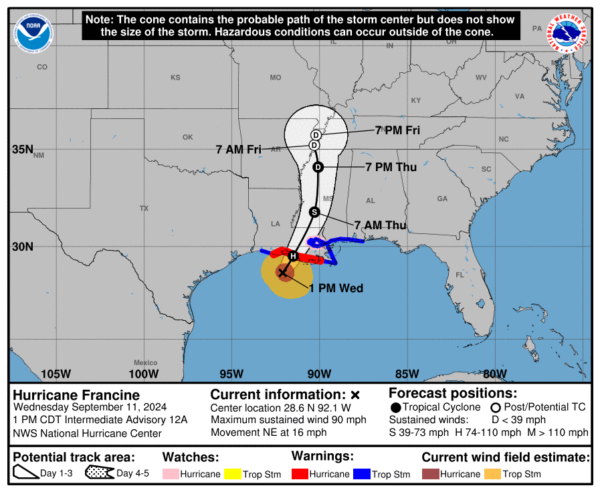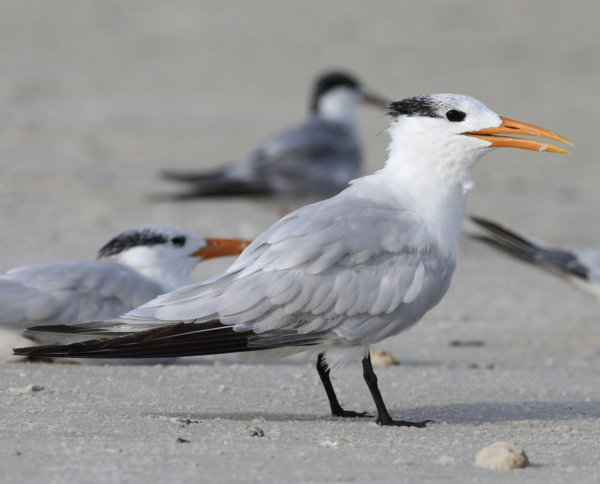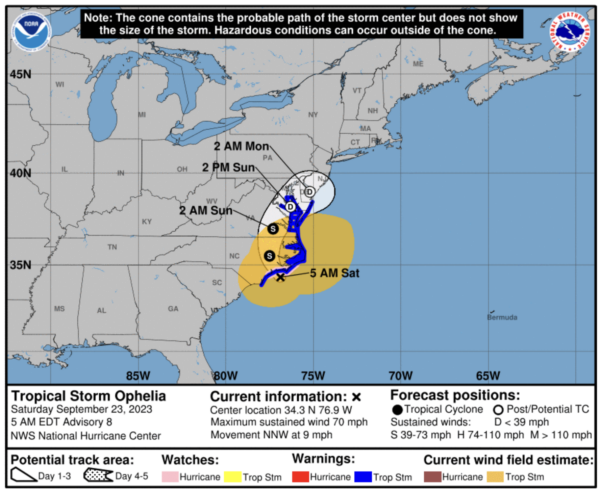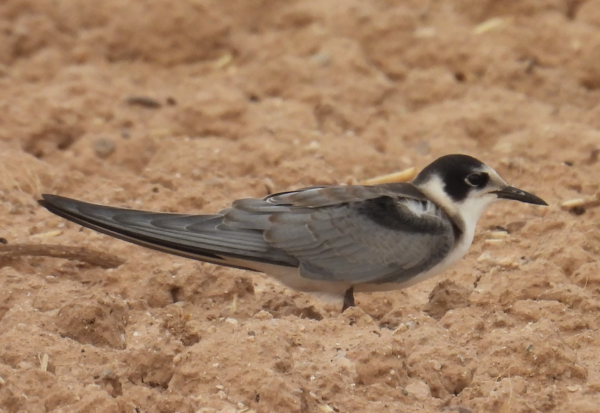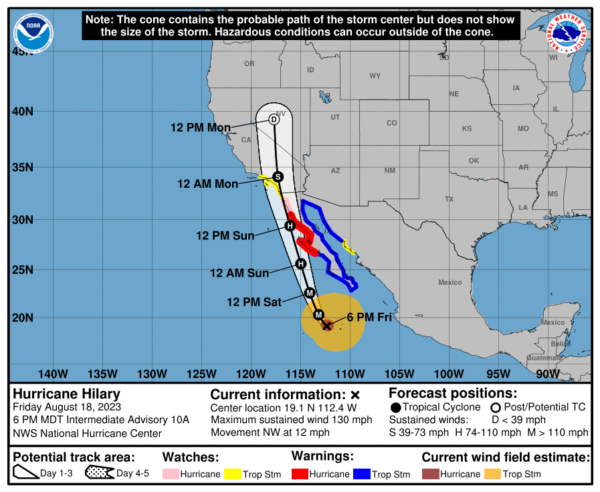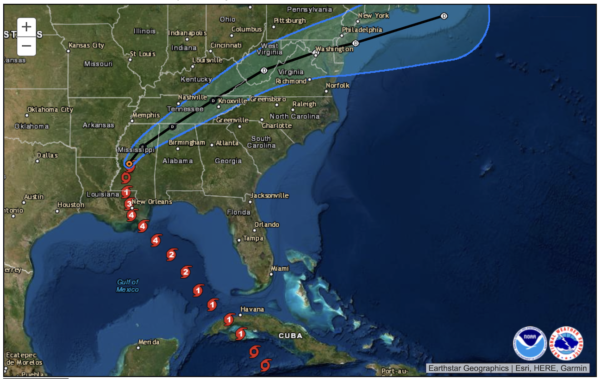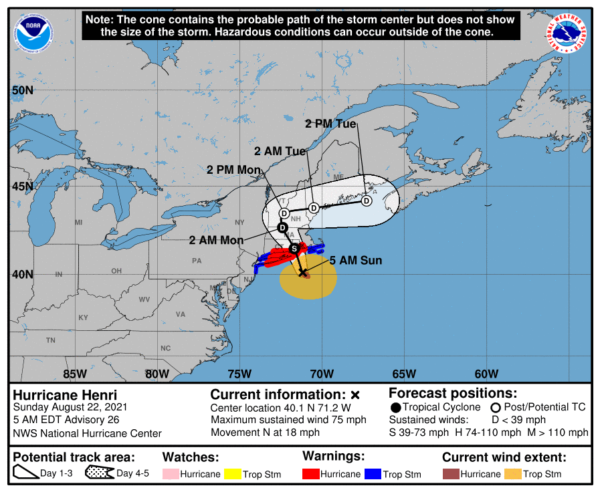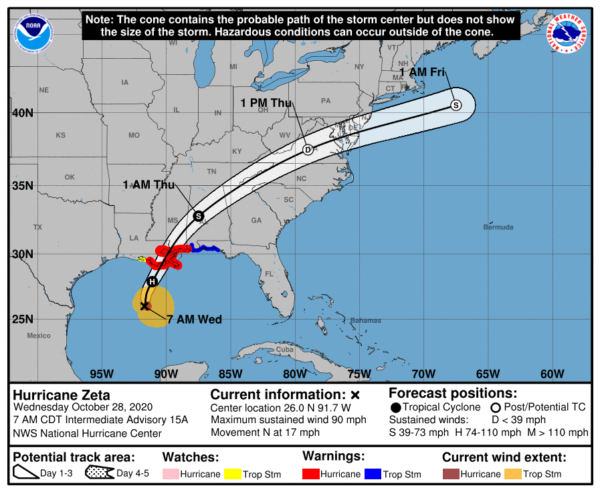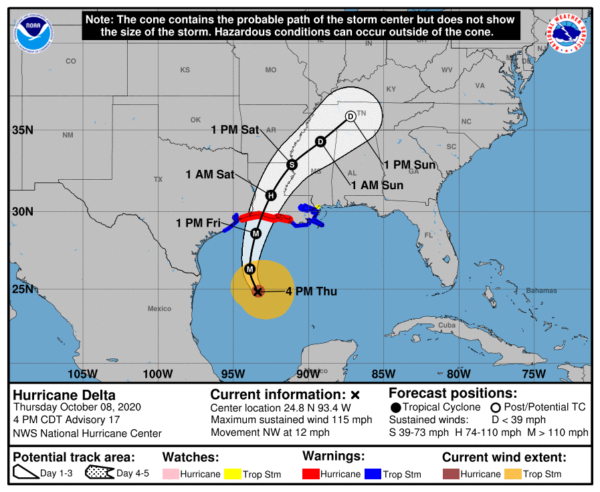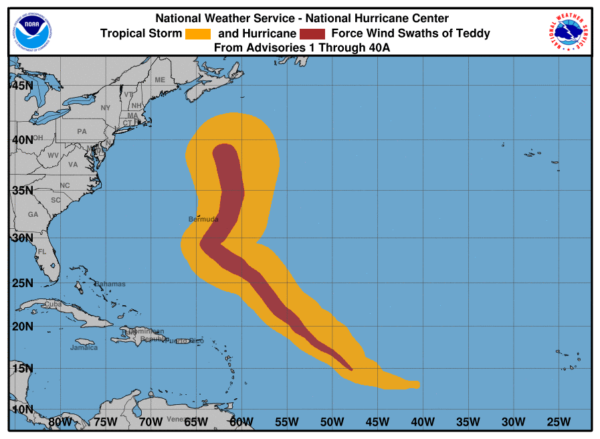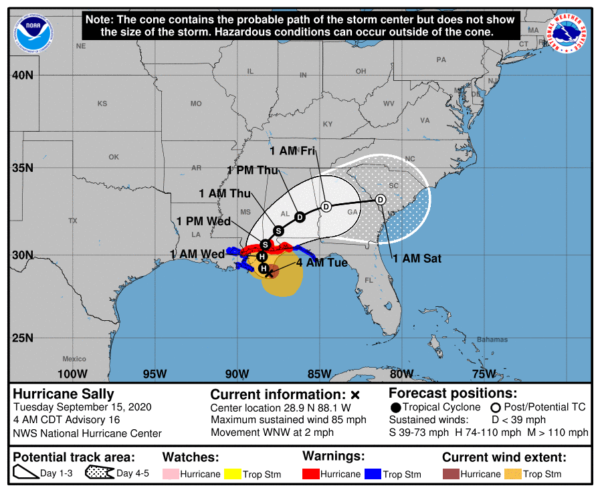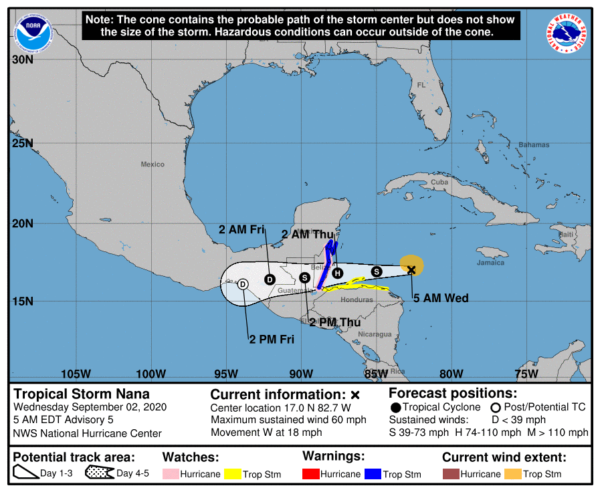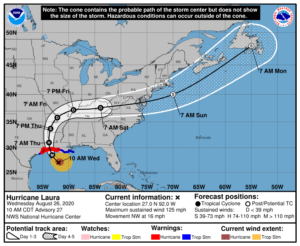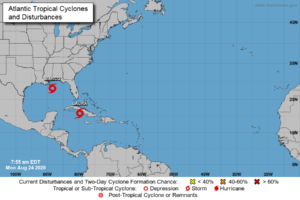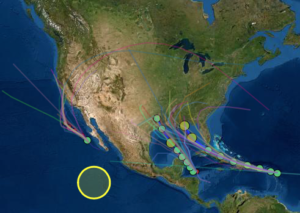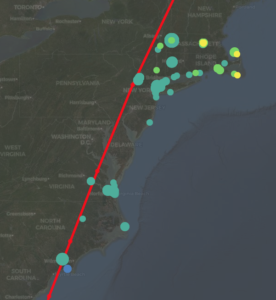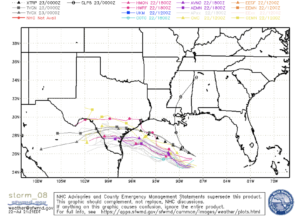News: Cyclones
Francine made landfall in Louisiana, now making its way north along the lower Mississippi River valley. Its circulation has entrained some pelagic birds, displaced some nearshore species, and downed overland migrants. Read more...
Debby arrived to Florida, meandered its way into the Carolina Bight, made landfall in the Carolinas, and is now rapidly speeding toward the northeastern portions of the continent. This storm, though not powerful in terms of winds, has produced large amounts of precipitation in its path and its wake. It's also entrained some pelagic birds, displaced some nearshore species, and downed overland migrants. Read more...
Tropical Storm Ophelia made landfall this morning in North Carolina, and, with safety first we are tracking observations of storm-driven birds reported in the wake of its passage. Read more...
Hilary's literal windfall (and precipitation!) of vagrant hurricane-driven birds is still growing, but so is the number of regularly occurring species in the region that are occurring in unusual numbers or in unusual locations associated with the passage of this system. Read more...
Hurricane Hilary may bring a significant diversity of entrained and displaced birds to California and Nevada, with impacts as far reaching as Oregon and Idaho. Read more...
Hurricane Ida made landfall in Louisiana as a category 4 storm, and its remnants continue to move north and east through the US. Numerous seabirds entrained and displaced by this storm are occurring far inland, and our live map of these observations highlights their distributions. Read more...
On Sunday Tropical Storm/Hurricane Henri will make landfall in southern New England with dangerous storm surges, strong winds, and heavy rainfall. The storm is then slated to move north up the Connecticut River valley before departing east into the Gulf of Maine. This system will bring numerous seabirds ashore, in many coastal and inland waterbodies in and east of its path. Read more...
Numerous storm-driven birds have likely appeared in peninsular Florida as the meandering Tropical Storm Eta churns in the Gulf of Mexico. With the forecast for the storm to make landfall and move quickly off into the Atlantic Ocean in the coming 24 hours, safe and careful observers may find a range of Gulf of Mexico seabirds and some displaced waterbirds. Read more...
Hurricane Zeta is powering toward the Louisiana coast, predicted to make landfall on Wednesday afternoon. This storm will certainly entrain Gulf of Mexico seabirds, as well as displacing some nearer shore species inland and dropping overland migrants. Given the storm's arrival time, predicted track and speed, birders from the Louisiana coast to Cape May, NJ should keep safe, socially distanced, and watchful eyes on all bodies of water and your favorite birding patches. Read more...
Hurricane Delta is a powerful storm predicted to make landfall late on Friday on the Louisiana coast. Gulf of Mexico seabirds, as well as some nearer shore species and overland migrants, will be associated with the arrival and passage of the storm as it moves inland to the north and east. Read more...
Hurricane Teddy is arriving soon in Atlantic Canada. A significant diversity of tropical seabirds may arrive with it in Nova Scotia, Newfoundland, and possibly even Greenland. Read more...
The active week for tropical systems in the Atlantic Ocean Basin continues, with Hurricane Sally making landfall on the Gulf of Mexico coast. A suite of species like Sooty Tern, Bridled Tern, Magnificent Frigatebird, and Brown Noddy is possible at the immediate coast and well inland. Watch live tracking of bird observations after Sally's landfall. Read more...
Nana is approaching the coast of Central America, bringing with it the potential for tropical seabirds and downed overland migrants. Read more...
Laura is or will soon intensify to a Major Hurricane with unsurvivable storm surge and extremely dangerous conditions. Current forecasts predict landfall near the Texas-Louisiana border. Avian impacts from Laura's landfall north to Arkansas and east through western Tennessee are likely on Thursday and Friday. Read more...
This week the Gulf Coast of the US will experience landfall of two tropical systems, Laura and Marco. This dangerous twin bill will come with flooding, storm surge, heavy rains, and wind in many areas of the western Gulf of Mexico and lower Mississippi River valley. BirdCast is tracking the arrival of the two storms, and you can monitor with us on two maps tracking bird observations as they occur with landfall. Read more...
Team BirdCast like many other groups is watching the progress of three tropical systems that may make landfall in the US next week. Stay tuned for updates in the coming days! Read more...
Sooty Tern is often the bird of tropical weather systems once ashore (or very close to shore). Numerous records of far-flung individuals pepper the archives of such weather systems, and Hurricane/Tropical Storm Isaias was no exception. Read more...
Hurricane Isaias is forecast to make landfall in the US on the Carolina coast after grazing the Florida Peninsula and passing directly over the Bahamas and nearby islands. This storm will likely produce hazardous conditions where it passes, including damaging winds, dangerous storm surges, and torrential rains with flooding, and it will bring seabirds and other entrained and displaced species ashore far afield from their typical locations. Check out our live sightings map at the end of the post; and follow updates as we make them. Read more...
A tropical system is building in the Gulf of Mexico, forecast to intensify in the coming days and then move ashore in central or southern Texas. Whether this system intensifies to hurricane strength or continues as a tropical storm or depression, it is likely to bring an array of seabirds ashore in southern and central Texas and possibly northern Mexico. Read more...
Tropical Storm Fay is a fast moving system that is forecast to travel a similar path to Hurricane Irene at a similar time as Tropical Storm Bertha. What will this system hold for those that can observe safely in the DelMarVa, coastal New Jersey and Long Island, Hudson River Valley, Lake Champlain, and St. Lawrence RIver Valley areas? Read more...

